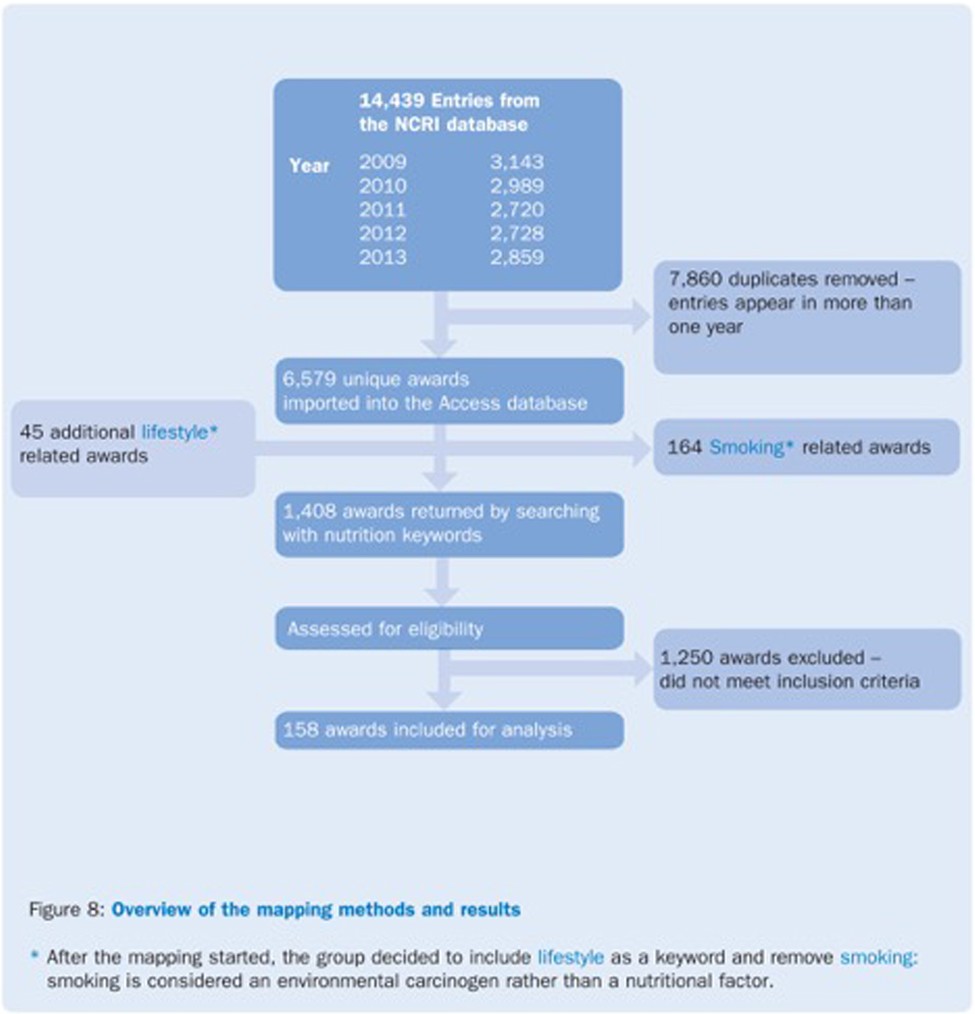Key findings of the mapping exercise
Some of the key findings from the mapping exercise (2014-2015) include:
1. A small proportion of cancer research awards included an explicit nutrition component (11%).
2. A large proportion (80%) of included awards were human studies, more than a third of which looked at the relationships between non-site specific cancers and lifestyle exposures without specifically characterising a nutrition theme. These human study awards were predominately for:
- Supporting large cohort studies to collect dietary data and specimens, or conduct statistical data analysis
- Understanding the effects of nutrients or nutritional status on cancer risk by using observational or interventional data
- Surveillance of, or intervention on, cancer risk factors such as dietary patterns, body weight and physical activity.
3. There were only a small number of relevant animal and in vitro study awards, which may be due to the stringent exclusion criteria applied. However, animal studies explicitly exploring at the link between cancer and nutrition were included, e.g. a mouse prostate cancer model to test oral supplements.
4. The most frequent specific cancer sites studied in relation to nutrition were colon and rectal cancer, breast cancer, lung and oesophageal cancer. These cancer sites have most potential preventability through diet and physical activity.
Diagram: Overview of the mapping methods and results


